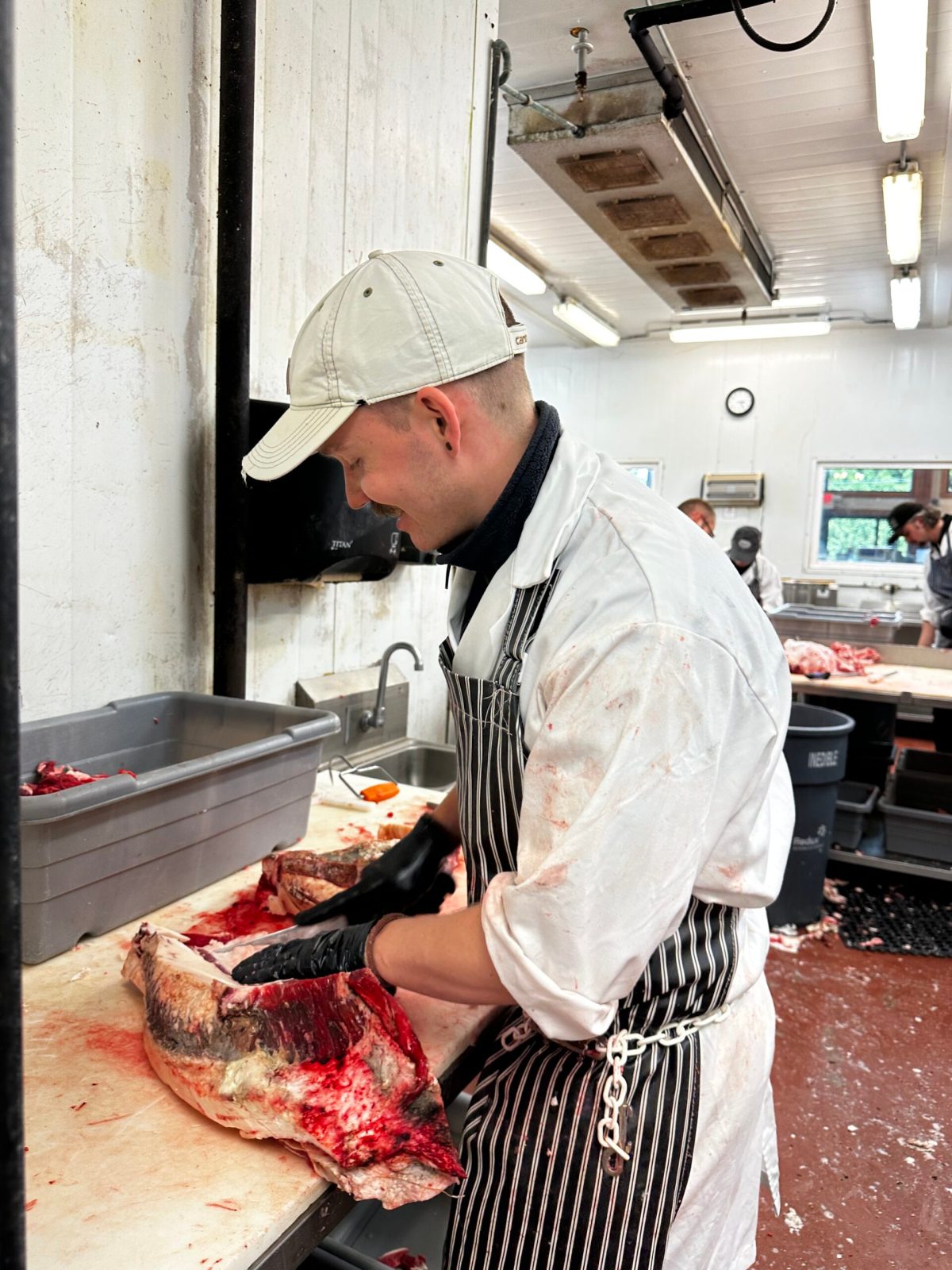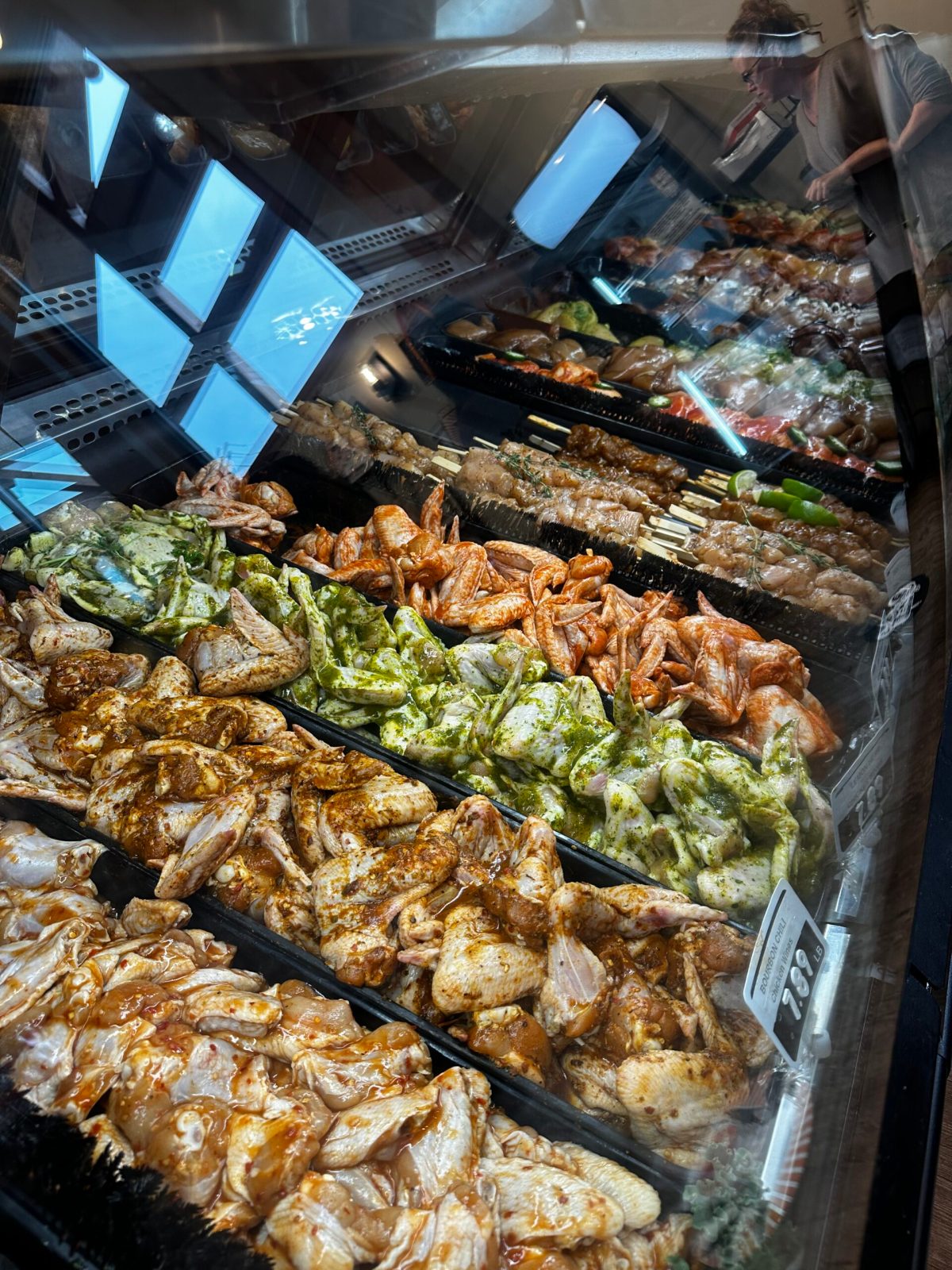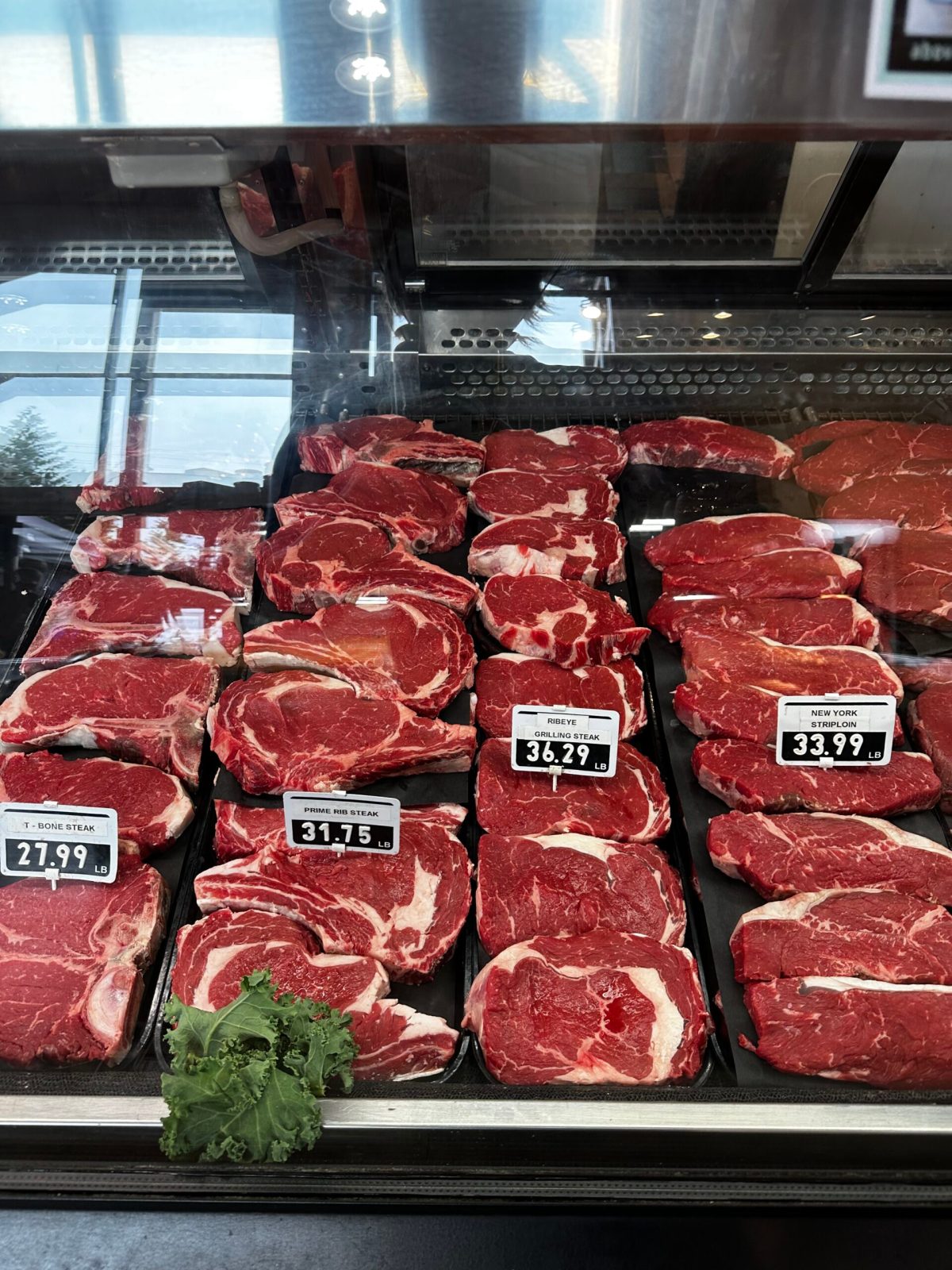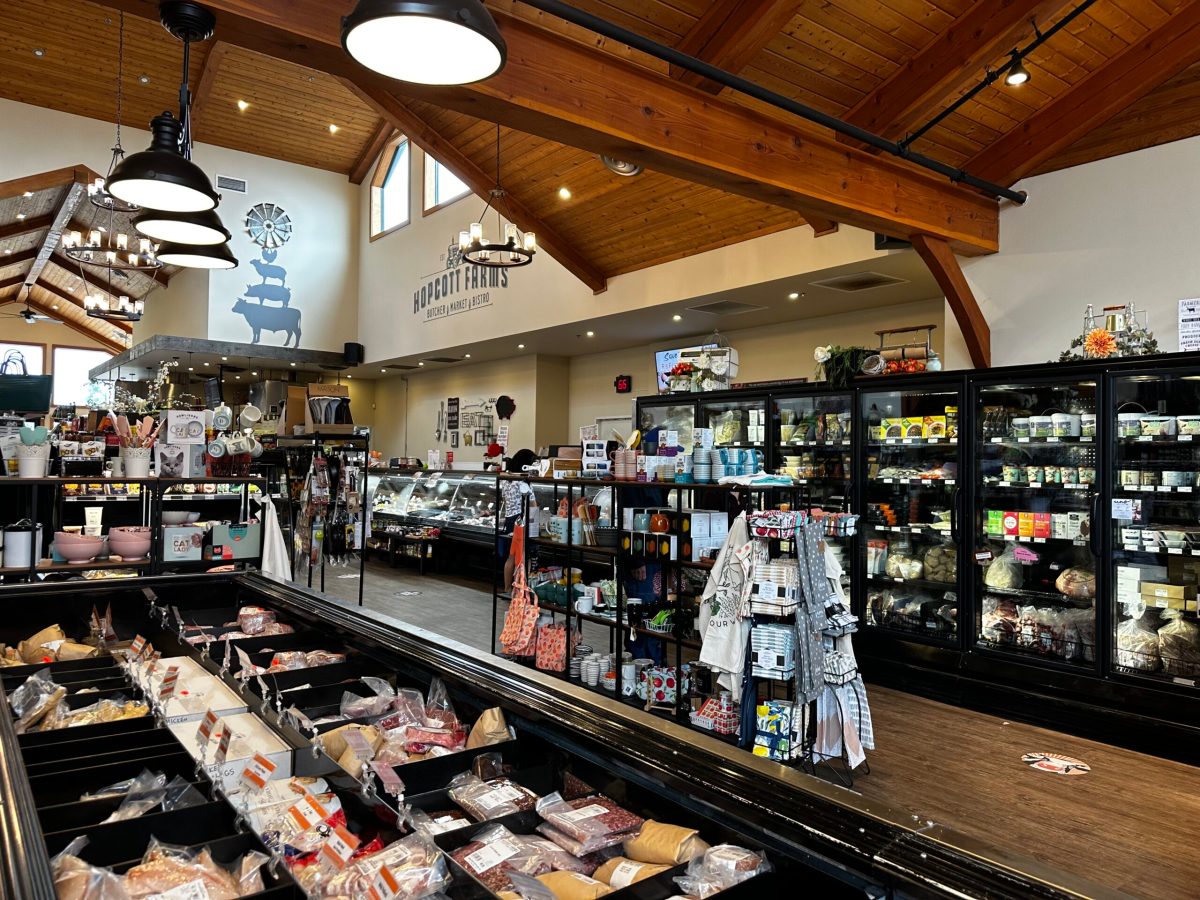Today we were at Hopcott Farms for a unique look at their back of house operations, as a working farm with harvest ready crops, livestock, abattoir (the more ear pleasing way to say slaughter house), and farm store with its own butchery and bistro.

Located in Pitt Meadows, Hopcott Farms is a third-generation small-scale farm originating from the 1930’s. And we were ultimately here to learn where our food comes from.
“After sourcing grass-fed cattle from the Interior, they are brought to the farm where they are raised, slaughtered, and processed. As uncomfortable as this topic may be, having an onsite abattoir allows the Hopcotts to oversee quality, ensure humane animal slaughter, and allows for no waste.” (As taken from the press release.)

Our tour began in their fields, exploring their curated selection of food and feed crop that includes corn, strawberries, and cranberries.
We traversed the tall corn field and picked cob straight off the stalk, looking for ones with the most brown coloured hair growing from its husk. This meant the corn was ripe and at its sweetest.

Here we were given a taste of what real and natural corn should taste like, sweet and not needing of any roasting or seasoning for an amazing, ready to eat flavour.

Next, we would get to pick fresh ripen strawberries from their ground level vines. Delicious berries sweetened by the sun.

In the cranberry field the fruit was less sweet and lot more tart. Here, we were given a crash course on cranberry picking, starting with the flooding of the fields when it is time to harvest. As a time saving measure, and not having to pick each berry by hand. The “Beater” then loosens the berries from off of their stems, where they float up and are gathered up. One million pounds of Hopcott’s yield goes to Ocean Spray, the large juice brand offering their famous cranberry cocktail in bottle. Ocean Spray are cooperative growers, where profits goes back to the farm families.

Next we moved on to the barn and their cattle. Our owner/host was proud to point out their oldest barn built in 1934 with repurposed ceiling at over 100 years old, and the barn itself being at 90.
Their farm originally had its turning point in 2003 with mad cow disease running rampant. They broke ground for the store and butcher shop to combat said disease, being able to control and contain their beef as a smaller, all hands in kind of farm.

Hopcott focuses on cattle as a food source so only purchases cows raised for meat and consumption. Here, we learned that the colouring of the cows or heifers makes no difference in taste or quality of the meat, be it black or red angus or a Hereford with their white faces.
The only real thing to differentiate them are their ear tags, which are attached for traceability, and includes the hour and where they were born. When they come to Hopcott they are raised and processed there, with no additional travel. Thus reducing carbon foot print, and adding a lot less stress to the animal, decreasing their chances of getting sick.

For those unfamiliar (I myself only learned of this during this trip) “Cows” are females who have given birth, “Steers” are castrated, males, “Bulls” are males used for mating, and “Heifers” are the females who have not given birth.
Fun fact: unbeknownst Hopcott one of the cows they purchased was impregnated young and as a result, there was a calf we were able to pause and admire during our barn tour.

The cows are given grain and stored grass that is harvested on property. The latter is like coleslaw to them, where hay is more like a salad. But their favourite is bakers waste and steam rolled corn and barely, which eats more like cheesecake to the cows. This also adds to the marbling of the meat.

We would then head over the the slaughter plant, where I was shocked. Everything I imagined about it being a dark and dingy dungeon was wrong. This was a well maintained and clean warehouse. Overseen by an on site health inspector whenever they are doing any of the slaughtering. Then sprayed down heavily and cleaned thoroughly after each session. The only thing they couldn’t remove was the distinct smell of iron from all the blood. Not unbearable per se, but also not a scent you soon forget.

In order to maintain the best product possible, this process is carefully administered so that the cows are not under stress. Winding conveyor belts ensure the animals cannot see ahead and catch wind of their fate. They eventually come face to face with a fake cement wall, where a quick gun bolt blow to the forehead ensures they are brain dead and feel no extra pain. After this their death is quick and imminent.

The meat that is to be food gets cuts down to size and chilled quickly, this includes dry aged beef that spends more time hanging on the hook.
The larger halves of the cow are then butchered down to size in the back of their meat market. Where everything is craved and hacked down to strip loin, t-bone, ribeye cuts, etc.

All of the animal is processed, all of it its parts used. For example entrails are stored in drums covered in saw dust and allowed to decompose to become future compost for their nutrient rich fields. And scraps are used in their products, which includes dog food items.

How well maintained and fully stocked the meat case is speaks to their pride. All the beef in store is theirs. However the pork, chicken, and lamb are not, but are sourced locally from the Fraser Valley.

Their best sellers includes higher end cuts for summer barbecuing, skirt steak as a mid range offering that is affordable, burgers that are an easy meal solution.
They also supply their beef to Granville Island’s Popina, the seafood and dessert container restaurant by the dock, Billy Bob jerky, and Continental Sausages, to name a few.

And now that you know where you meat comes from and have picked out a couple of steaks, you can get everything else you need to make a meal, right here at Hopcott. Prepare a meal in full, shopping all that is available in their farm market. From fresh herbs and vegetables to speciality seasonings produced by mom and pop brands in small batches.

And if aren’t feeling like cooking they have a freezer of frozen, heat to eat meals, plus their own bistro where you can enjoy burgers or sandwiches to order. Beef dips, a Hawaiian chicken burger with grilled pineapple slice, and even poutine.
In closing, this family run local butcher shop and farm, is committed to bringing quality, local, farm-fresh products direct to your table and are not shy or scared to show you how they are doing it. The visuals might not be for everyone, squeamish for most. However, I think it is important to know where your food comes from; and the realities of it are a part of life if you like steaks, burgers, and stews. All of which are non-GMO, no-added hormones or steroids beef.

They great one for those in the neighbourhood, a solid option to help eat better and more cleanly. Worth driving down for, for a real authentic take of “farm to table”.
Hopcott Farms
18385 Old Dewdney Trunk Rd, Pitt Meadows, BC V3Y 2R9
hopcottfarms.ca





